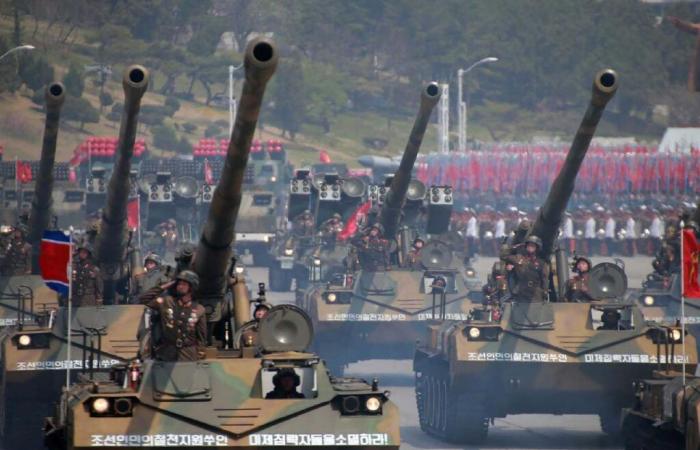
-
North Korea appears to have transferred different types of artillery systems to Russia.
-
These are systems that have long threatened South Korea.
-
The development has come as North Korean troops fight against Ukraine on behalf of Russia.
North Korea appears to have sent its big guns to Russia, furthering its support of Moscow’s grinding war against Ukraine, a conflict in which artillery has been a dominant player.
The news of the recent transfer of artillery pieces complements the thousands of troops North Korea has committed to the war to fight on behalf of the Russians and underscores the key role that shells and rockets continue to play in the conflict.
Images began to surface on social media last week showing what were identified as North Korean “Koksan” 170 mm self-propelled howitzers traveling by rail across Russia.
The transfer of 170 mm systems has since been reported by Western media citing South Korean intelligence, which says Pyongyang has also transferred 240 mm multiple rocket launch systems to Russia.
Can Kasapoğlu, a nonresident senior fellow at the Hudson Institute think tank, said Wednesday that the 170 mm and 240 mm systems were the two most powerful that North Korea owns.
The Koksan “has an operational range of 37 miles and can unleash an initial burst of four rounds in one minute, followed by one round every three minutes,” Kasapoğlu wrote in a military situation report on Ukraine that was published Wednesday.
“It is designed to fire from protected areas and relocate for reloading. Pyongyang has hundreds of Koksan guns in its arsenal and can afford to send a significant number to the Kremlin,” he added.
The first Koksan guns appeared in 1978, and a newer version made an appearance in 1989. It’s the longest-range non-rocket artillery system in the North Korean arsenal, according to the Center for Strategic and International Studies’ Missile Threat project. It can lob high-explosive shells roughly 25 miles or rocket-assisted shells out to about 37 miles.
On the high end, that range gives it a reach greater than some other artillery systems and just under that of the Guided Multiple Launch Rockets for the US-provided High Mobility Artillery Rocket Systems.
North Korea is said to have a highly capable artillery force with thousands of systems in its arsenal. In a 2021 report, the US Defense Intelligence Agency said Pyongyang could launch a “high-intensity, short-duration attack” on South Korea and mount an assault with little or no warning.
The DIA report said Pyongyang’s artillery and armored force mainly consisted of North Korean–produced copies of Soviet-era systems that were “largely based on old technology” but “reliable and easy to maintain.”
While drones and other innovations have heavily defined the Ukraine war, artillery still plays a central role in the fight, with both sides using their guns to inflict significant harm on the enemy. Kyiv has repeatedly raised concerns at times that it doesn’t have enough ammunition from the West to keep up with Moscow, which is believed to have received millions of artillery shells and missiles from North Korea.
A news broadcast of North Korea’s artillery firing shown at a railway station in Seoul, South Korea, in January.Chung Sung-Jun/Getty Images
Artillery has long been described as the “king of battle,” among other names, and that continues to be the case in Ukraine, even as other war-fighting technologies come into play.
Kasapoğlu said it was unclear whether North Korea sent the artillery pieces to support Russian units or for its own forces operating inside Russia’s western Kursk region.
The US assesses that more than 11,000 North Korean troops have deployed to Kursk, where Russia is attempting to take back territory that Ukrainian forces captured after they executed a daring cross-border invasion in early August.
North Korean forces have already engaged in combat against Kyiv’s troops. The first battle actually involved artillery strikes, and shelling is a near-daily occurrence. NATO said the introduction of Pyongyang into the war was a “significant escalation” in the grinding conflict, which just passed the 1,000-day mark.
In response to the North Korean development, President Joe Biden lifted restrictions on Ukraine’s use of longer-range missiles to strike targets inside Russia — a major policy shift in the final weeks of his term.
Read the original article on Business Insider





